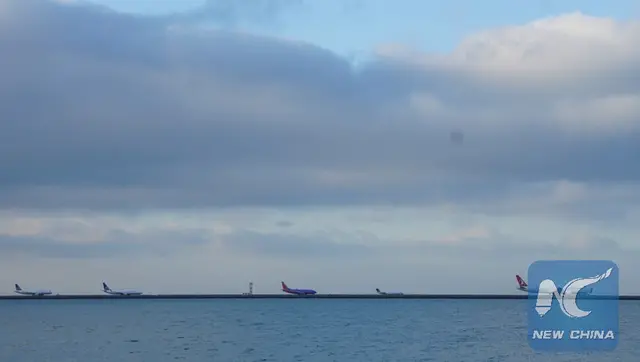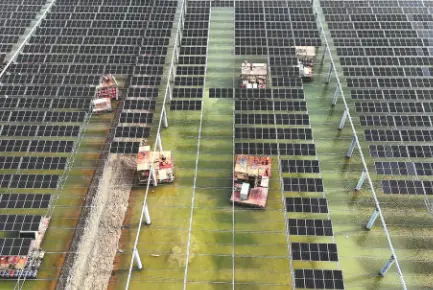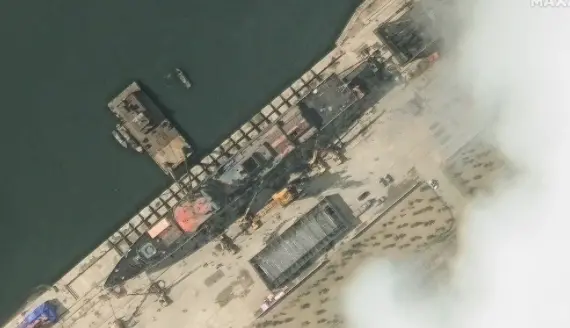About a near-miss crash by an incoming Air Canada flight into four
outgoing flights a month ago at San Francisco International Airport, an
administrator of an international passenger carrier has called it
"scary."
At the time, minutes before mid-night on July 7, few people other
than those in the cockpit of Air Canada flight 759 knew what happened.
With more details coming out thereafter, especially the release
Wednesday of an investigative update by the U.S. National Transportation
Safety Board (NTSB), the airline administrator, who works at the
airport code named SFO and prefers not to be identified, said the
potential catastrophic results of the incident was "scarier than ever."
Air Canada flight 759, an Airbus A320 passenger plane, was carrying
135 passengers and 5 crew member from Toronto, Canada. If it did touch
down in its initial approach onto a taxiway at the airport, it would
crash into four planes already there ready to take off, endangering the
lives of more than 1,0000 passengers aboard all five planes.
In aviation history, the worst airport disaster and the deadliest
accident took place on March 27, 1977, when two Boeing 747 jets collided
on the runway at Los Rodeos Airport, now Tenerife North Airport, on the
Spanish island of Tenerife, Canary Islands, killing 583 people.
CLOSE CALL
According to the NTSB update, about 11:56 p.m. Pacific daylight time
(PDT) on July 7, Flight 759, or AC759, was cleared to land on runway 28R
at SFO, which is 13 miles, or 21 kilometers south of downtown San
Francisco, Northern California.
Instead, it lined up on parallel taxiway C, where four airplanes were
awaiting takeoff clearance, including United Airlines flight 1, a
Boeing 787; Philippine Airlines flight 115, an Airbus A340; United
Airlines flight 863, another Boeing 787; and United Airlines flight
1118, a Boeing 737.
At 11:55:46 p.m., upon spotting aircraft lights on the ground about
0.7 miles, or 1.1 kilometer, from the runway, the AC759 pilot asked the
tower if he was clear to land on 28R, to which the air traffic
controller responded at 11:55:56 p.m., "There's no one on 28R but you,"
when AC759 was about 0.3 miles, or 0.48 kilometer, from the runway
threshold.
Interviewed by investigators, the AC759 pilots did not recall seeing
aircraft on taxiway C, but "something did not look right." The pilot of
United Airlines Flight 1, first in line for takeoff, interrupted the
radio traffic at 11:56:01 p.m. and asked "Where is this guy going? He's
on the taxiway." The air traffic controller then ordered AC759 to abort
the landing at 11:56:10 p.m, when AC759 had already started to climb.
After AC759 acknowledged the go-around, the air traffic controller
stated, "It looks like you were lined up for (Taxiway C) there."
By calculating the time element based on data from FlightAware, an
aviation software and data services company based in Houston, Texas,
pilot Max Trescott of Mountain View, California, told the Mercury News
of San Jose that had the Air Canada pilot waited five more seconds to
pull up, he would have hit the third jet on the runway, the United
Airlines flight 863, which was headed to Sydney, Australia.
IMMINENT RISK
While there were no reports of exact numbers of passengers aboard the
jets on the taxiway, the flights were known to have capacity of
carrying 252, 264, 252 and 177 people respectively.
Besides hundreds of passengers, the outgoing planes were filled with fuel.
NTSB, an independent U.S. government investigative agency
headquartered in Washington D.C., was notified of the incident two days
later, on July 9, thus initiating an investigation.
The NTSB investigator-in-charge has formed several groups, namely Air
Traffic Control (ATC), Operational Factors, Human Performance,
Airports, and Flight Data Recorders (FDR), to look into various aspects
of the incident. Parties to the investigation include the Federal
Aviation Administration (FAA) and the U.S. National Air Traffic
Controllers Association.
In its update, NTSB identified that the captain was the pilot flying
AC759, and the first officer was the pilot monitoring at the time; the
pilots advanced the thrust levers to abort the landing when the airplane
was about 85 feet, or 26 meters, above ground level; and about 2.5
seconds after advancing the thrust levers, the minimum altitude recorded
on the flight data recorder was 59 feet, or 18 meters, above ground
level.
At the time of aborting the touchdown, the airplane was over the
taxiway, while a Boeing 787 there is 55 feet, or 16.8 meters, tall.
In the cockpit of one of the Boeing 787s on the taxiway, the pilot of
United Airlines Flight 1 radioed the tower, saying "Air Canada flew
directly over us." He received response: "Yeah, I saw that guys."
GROUND FINDINGS
About SFO, investigators have found runway 28L, which is parallel to
runway 28R, was closed to accommodate construction; its approach and
runway lights were turned off, and a lighted flashing X, namely runway
closure marker, was placed at the threshold.
In addition, lights for taxiway C were on and set to default settings
that included centerline lights (green) along its length, including
edge lights (blue) and centerline lights (green), illuminating the
transition or stub taxiways from the runway to the taxiway.
At runway 28R, approach lighting was set to default settings, which
included a precision approach path indicator, touchdown zone lights
(white), runway centerline lights (white at the approach end), runway
threshold lights (green) and runway edge lights (white at the approach
end).
While acknowledging that there were no known air traffic control
(ATC) equipment discrepancies, the investigators notified that normal
air traffic staffing for the ATC tower midnight shift included two
controllers, but there was only one controller in the tower cab on the
evening of the incident.
And, as AC759 flew too far right of course to be observed by the
local controller's Airport Surface Surveillance Capability (ASSC)
system, which should have alerted the tower of a potential conflict
between runway and taxiway movements, it was not visible on the system
display for about 12 seconds.
NTSB noted that the investigative update does not provide probable
cause for the incident and that no conclusions should be made from the
preliminary information.
NO CLOSURE
At SFO, a busy airport on the U.S. West Coast serving national and
international travelers, there has been hardly any discussion about the
incident.
The administrator who talked with this reporter said information was
asked at a recent airport operations center (AOC) meeting about the
incident by the representative of an aviation company, but was "brushed
off" by an airport official.
"There has been no written notice, advice or anything from airport
operators so far," said the administrator, who declined to provide
details or comment on operations of SFO or other passenger carriers.
 简体中文
简体中文










